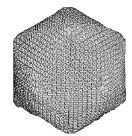Plant Pathology Department
Document Type
Article
Date of this Version
2004
Citation
Journal of General Virology (2004), 85, pp. 2741–2754. DOI 10.1099/vir.0.80320-0.
Abstract
Studies of cellular biology in recent decades have highlighted the crucial roles of glycans in numerous important biological processes, raising the concept of glycomics that is now considered as important as genomics, transcriptomics and proteomics. For millions of years, viruses have been co-evolving with their hosts. Consequently, during this co-evolution process, viruses have acquired mechanisms to mimic, hijack or sabotage host processes that favour their replication, including mechanisms to modify the glycome. The importance of the glycome in the regulation of host–virus interactions has recently led to a new concept called ‘glycovirology’. One fascinating aspect of glycovirology is the study of how viruses affect the glycome. Viruses reach that goal either by regulating expression of host glycosyltransferases or by expressing their own glycosyltransferases. This review describes all virally encoded glycosyltransferases and discusses their established or putative functions. The description of these enzymes illustrates several intriguing aspects of virology and provides further support for the importance of glycomics in biological processes.



Comments
Copyright 2004 SGM. Used by permission.